Must-have heritage wallpaper patterns for that period look
beautifulwalls.co.uk
Our guide to the essential historic designs for your walls – and how they evolved
You’d be forgiven for thinking that wallpaper would have adorned the stately homes of the aristocracy when it was first produced in the 16th century. But it was more likely to be found in merchants’ houses and, as the black-ink designs were only printed on small single sheets and joined together in-situ, it was confined to the smallest rooms or used to decorate the interior of cupboards. Who would’ve guessed that a trend popular with upcyclers began in the mid-1500s?
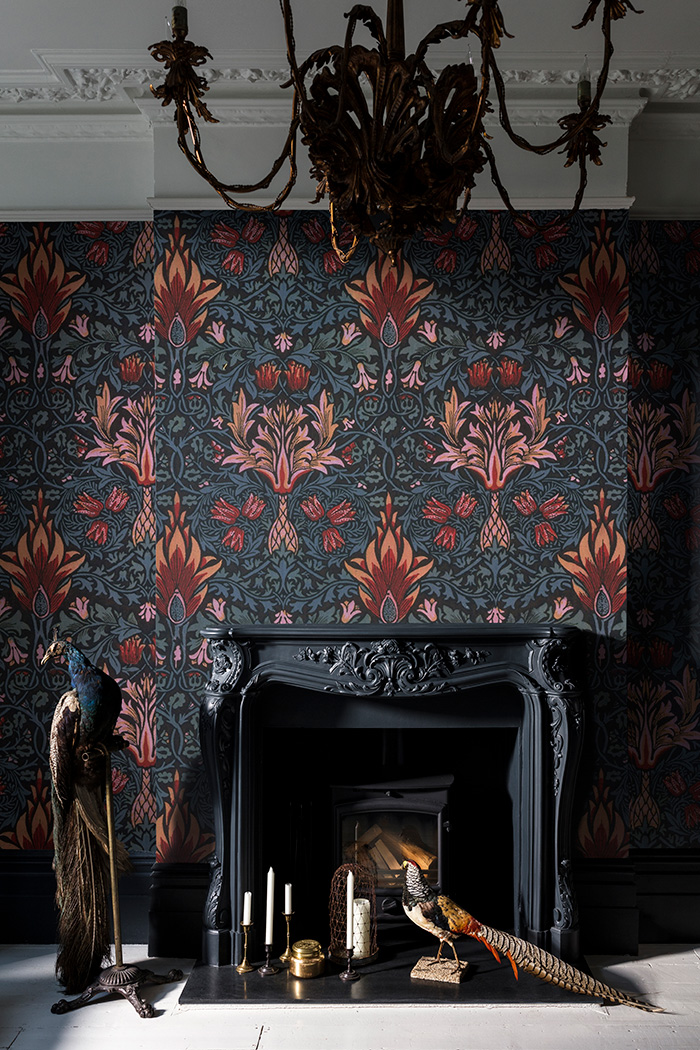
Snakeshead by William Morris, from the V&A collection
By the time William Morris’s designs became desirable status symbols during the Arts & Crafts movement, wallpaper could be printed using multiple carved wooden blocks in a process of layering and drying that took around four weeks to complete. Morris created around 50 designs, each consisting of up to 30 blocks, using 15 hand-mixed colours.
A converted fabric-printing machine was patented by Potters & Ross as the first wallpaper printer in 1839, vastly speeding up the process and therefore making wallpaper much more economical to produce. By the 20th century, most homes could afford to include wallpaper in their interiors, as it reached its peak of popularity in the 1920s and 1930s.
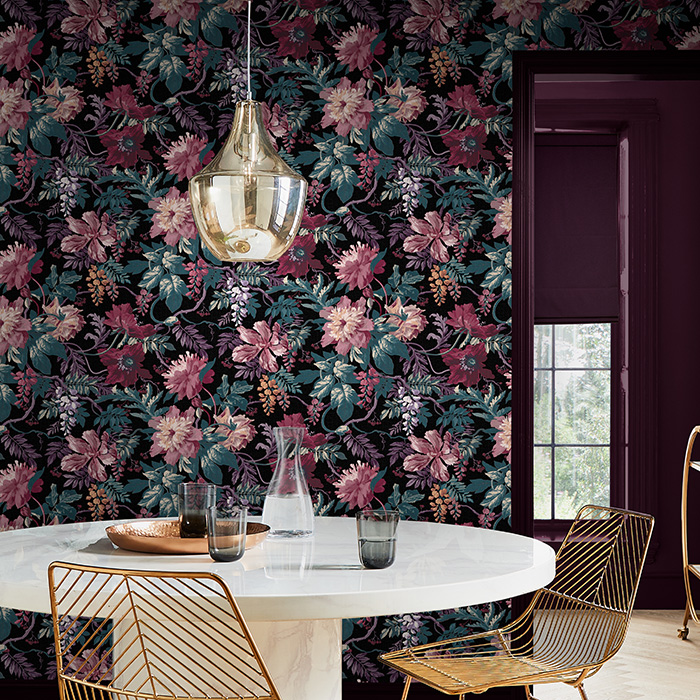
Florenzia from grahambrown.com
Many heritage patterns continue to be produced, often adding era-appropriate decor to a period property. James Greenwood, interior expert at Graham & Brown, agrees that wallpaper is one of the easiest ways to achieve an authentic historic look. ‘Our design archive not only spans over our 76 years in business, but also is home to some beautiful designs dating back to the 1800s,’ he reveals. ‘Our Florenzia wallpaper takes inspiration from archival florals originally designed for fabric but reinvigorated for 21st-century walls.’
Here are five iconic historic designs, perfect for that period look.
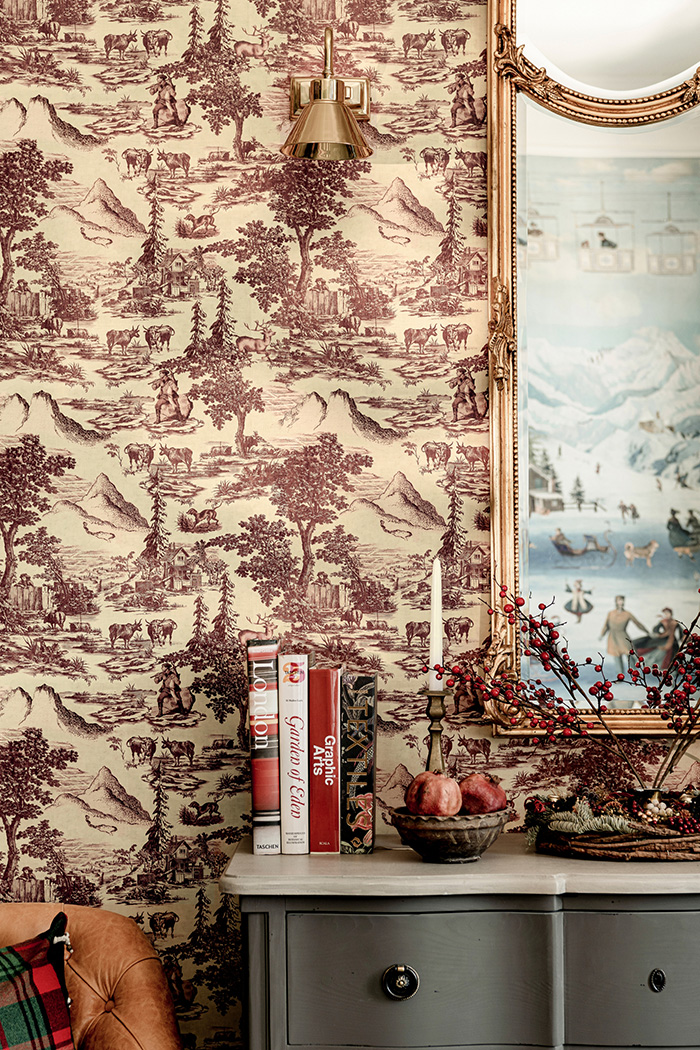
Toile du Tyrol by mindtheg.com
Toile de Jouy
Original toile de Jouy designs from 18th-century France were printed on to cotton or linen. Featuring illustrative figures, animals and pastoral landscapes, these were usually printed on to a white background in a single colour. James Greenwood of Graham & Brown recommends using it in compact areas, such as cloakrooms: ‘Small spaces can be transformed with maximalist wallpapers. Our Edo Toile is a beautiful archival design suited to this. Although a dark colour, the metallics allow light to bounce off the walls instead of being absorbed.’
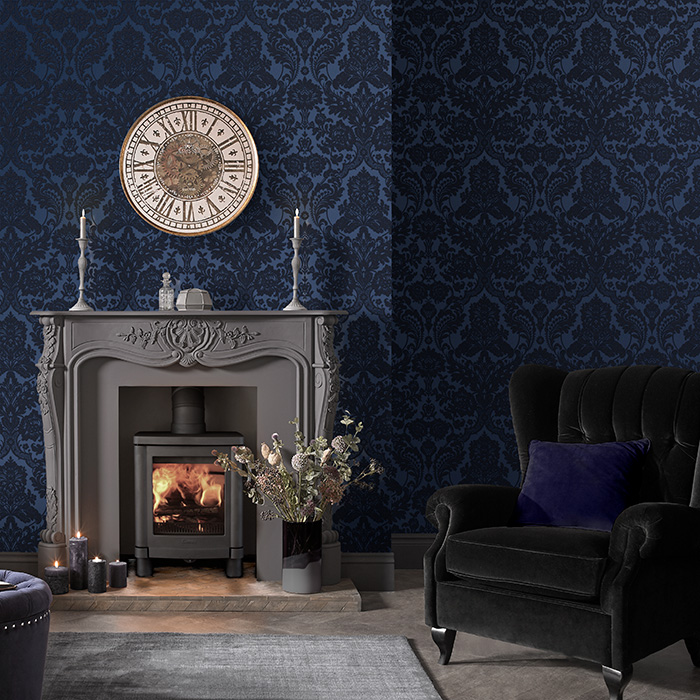
Gothic damask flock wallpaper by grahambrown.com
Flock
In 1634, Hugenot refugee Jerome Lanier patented a method to apply dyed wool to paper, replicating the appearance of the expensive fabrics that were usually used to decorate walls. Originally made with powdered wool, flock designs – as they came to be known – often feature damask patterns and raised elements with velvet-like textures. After crimson flocked wallpaper was used in the Queen’s Drawing Room at Hampton Court Place in the 18th century the design became very fashionable, and most country homes in England followed suit and decorated at least one room with textured flocked paper.

Damask based on a design from Lydiard Park, from the V&A collection
Damask
Opulent woven damask silk has lined the walls of the finest aristocratic homes since the 16th century, but the trend flourished during the Georgian period when England developed its own silk-weaving industry. The designs – often featuring flowers, leaves, feathers and fruit – were later reproduced as wallpaper in the Victorian era, enabling more homes to enjoy the luxurious patterns once reserved for stately buildings.
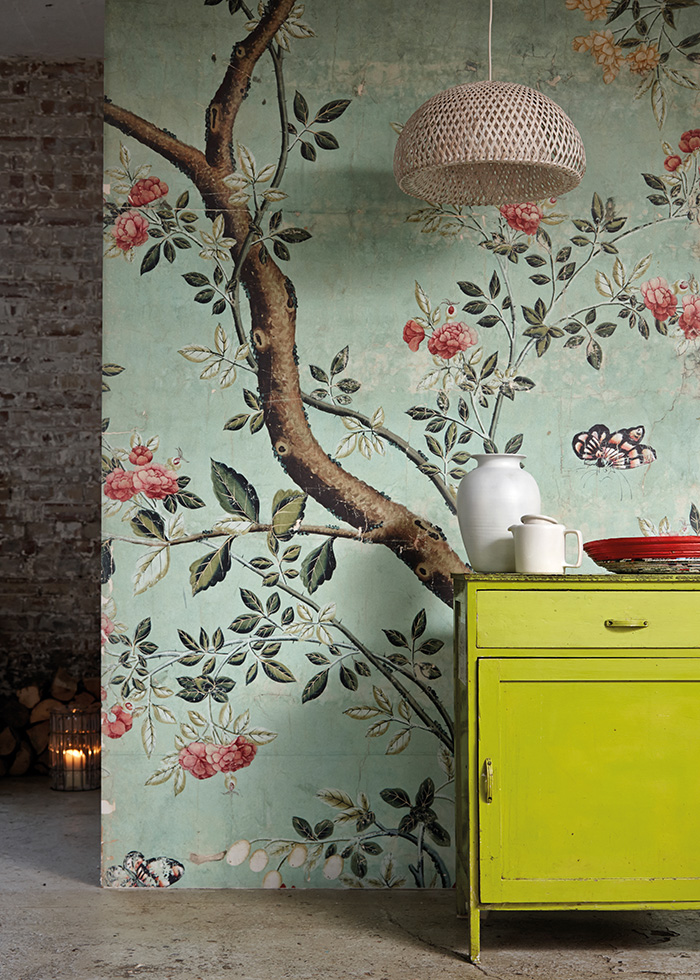
Chinoiserie
Large-scale, hand-painted papers were exported from China in the late 17th century and soon became a much sought-after luxury item. They were known for their detailed and naturalistic artwork and rich colours. Due to its popularity, this chinoiserie decorative style was soon interpreted by 18th-century European manufacturers, featuring ornate pavilions, exotic birds and blooming flora, as well as scenes of Chinese life.
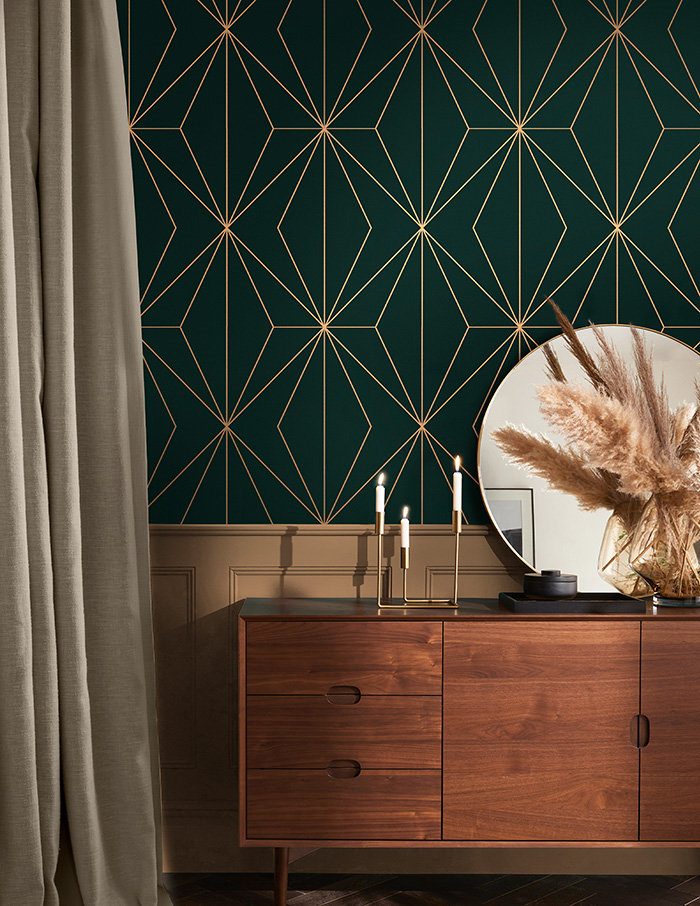
Harmony by grahambrown.com
Geometric
Influenced by modern art and popular culture, abstract geometric designs, Cubist-style motifs and linear patterns became popular for contemporary homes in the 20th century. Embossed and floral designs gave way to Pop Art styles in the mid-century era, and became vastly popular in the 1960s and 70s after the first pre-trimmed and ready-pasted papers were introduced.
WORDS: CASSIE FAIRY
Before you go...
...fancy automatic entry to all future competitions?
Simply register online today for FREE and you will get:
Automatic entry to all current and future competitions.
Access to Reclaim Inspiration - an online visual pinboard for saving all your home and style inspiration.
A regular newsletter of inspiration, ideas and advice.

Save all your articles in one place
Become a Reclaim Member to save all your home and style inspiration. Simply login or register online today for FREE and you will get:
Automatic entry to all current and future competitions.
Access to Reclaim Inspiration - an online visual pinboard for saving all your home and style inspiration.
A regular newsletter of inspiration, ideas and advice.








